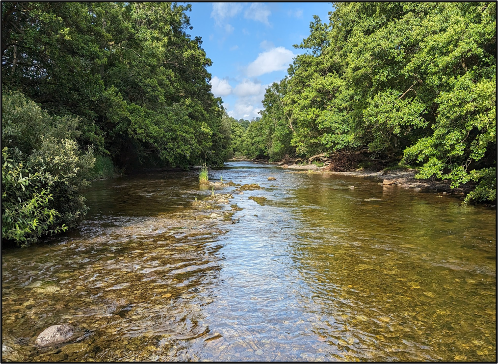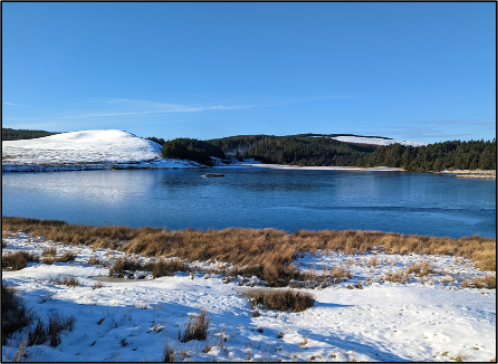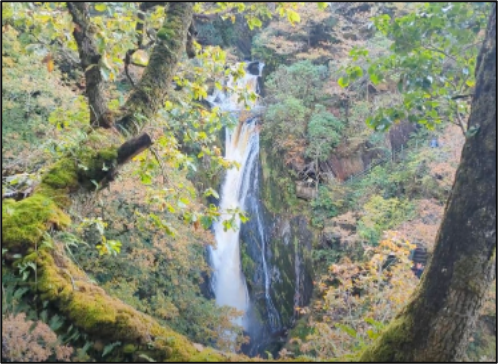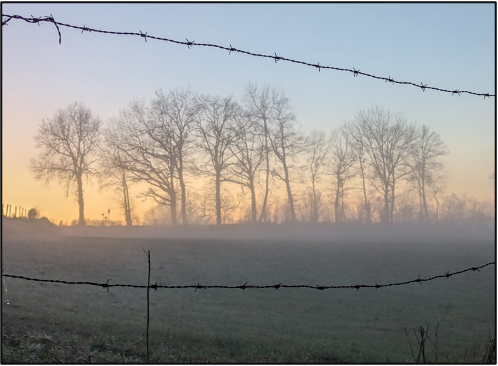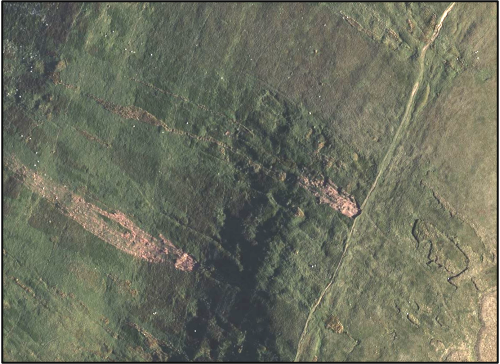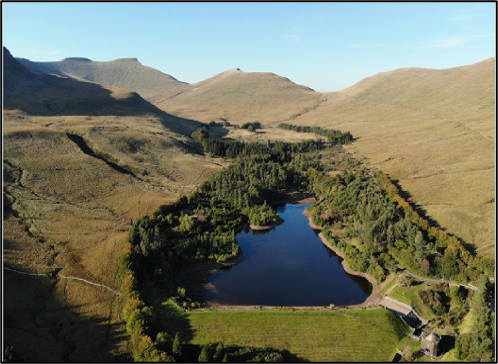
Living Watersources
Water is a component of the land cover but its description is more complex because of its dynamic nature and differing properties of the surface, volume and substate.
Developing new capacity for characterising, mapping and monitoring catchments in Wales. The project is working alongside Living Wales, with focus on retrieving or classifying environmental descriptors relevant to freshwater systems from Earth observation data and quantifying and mapping change impacts and driving pressures. The project is also developing approaches for improving water quality and use through improved catchment management in Welsh river catchments.
See below for more information
Our aims are:
To establish whether changes in land cover in Wales, as mapped from Earth observations through Living Wales over multiple time-frames, translate to degradation or improvements in water quality in Welsh waters.
Tagline 1
Our objectives are:
To determine the key environmental descriptors (e.g., water quality parameters and indicators) that can or cannot be monitored through Earth observations and which requiremanual field sampling effort or sensor network for quantification.
Tagline 2
Plans for the future of Welsh waters
Living Watercourse is directly supporting Dŵr Cymru Welsh Water’s future plans (link to: https://corporate.dwrcymru.com/en/about-us/our-plans), within these including ensuring a sufficient supply of useable water (e.g., for drinking), more integrated management of water resources, improved resilience of supply systems to pressures resulting from climate change including drought and flooding. Improving water quality from water sources to the coast is an essential component.
Tagline 3
Observing and quantifying change
Living Watersources is establishing how to determine change impacts on small waterways (e.g., streams, dykes) considering that many cannot be observed directly from Earth observation data, particularly that acquired at 10 m spatial resolution by the Sentinel 2 optical sensors. In Wales, many of the narrower watercourses are obscured from the view of the sensor by trees and other vegetation overhanging the water. Options being considered include the use of sensors onboard very high spatial resolution (< 3 m) Planetscope and Skysat data and airborne drones and in situ samples as inputs to hydrological and other models that simulate the movement of materials downstream. Detailed information on landscape characteristics and change is being represented and summarised by scaling to the 10 m grid cell used for mapping land covers by Living Wales.
Tagline 3
Planning for the future of Wales' water environments
The Global Change Taxonomy has terms and associated definitions that can be used to discern land use categories, many of which lead to changes in water quality. These activities include those relating to agriculture (e.g., use of fertilisers and pesticides, grazing, tillage, ploughing and harvesting), forestry (e.g., clear felling, planting), water (dam construction, pollution) and urban environments (e.g., amenity development, road or mine construction). A focus of Living Watersources is to develop capacity to relate conversions or modifications of land cover to land use changes (primarily human activities) over varying time periods and durations and to identify where these are leading to deterioration of water quality or improvements.
Tagline 3
Planning for the future of coasts
From rivers that have their source in the Brecon Beacons, landslides are leading to an increase in sediment loads. Climate change, and particularly increased precipitation in winter and drier summers, has been highlighted as a primary driver. Response actions include the planting of willow trees on steeper slopes that are potentially susceptible to landslides. For Dŵr Cymru Welsh Water, this is causing issues in the treatment of water so that it can be used by the population, including for drinking [link to: https://www.bbc.co.uk/news/uk-wales-57308780]. Living Watersources is comparing land cover maps derived through Living Wales to map the extent of landslides between years and is using the new Welsh Data Cube to provide more timely evidence of changes in water turbidity as the impact and landslides as the primary pressure.
Tagline 3
